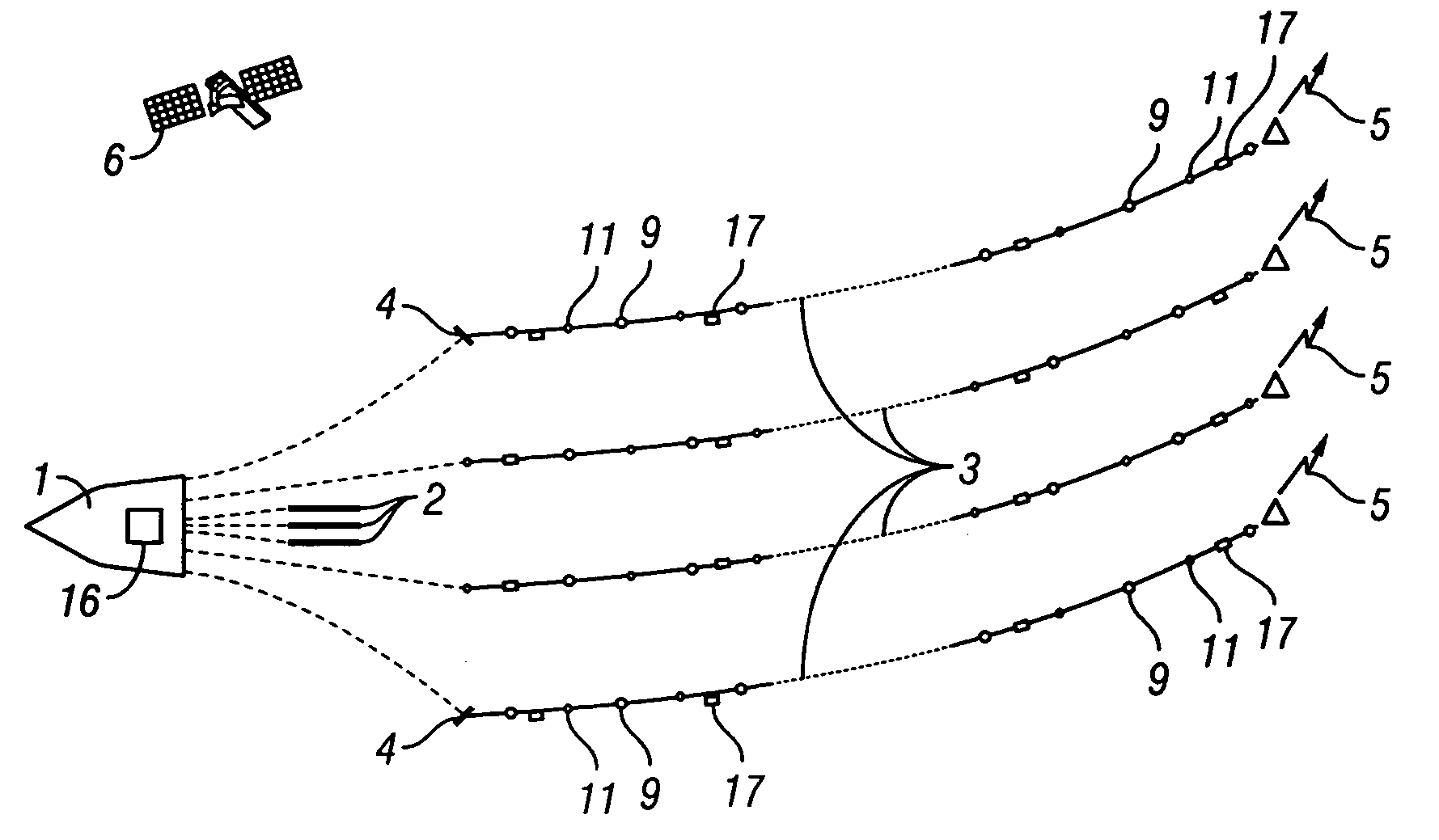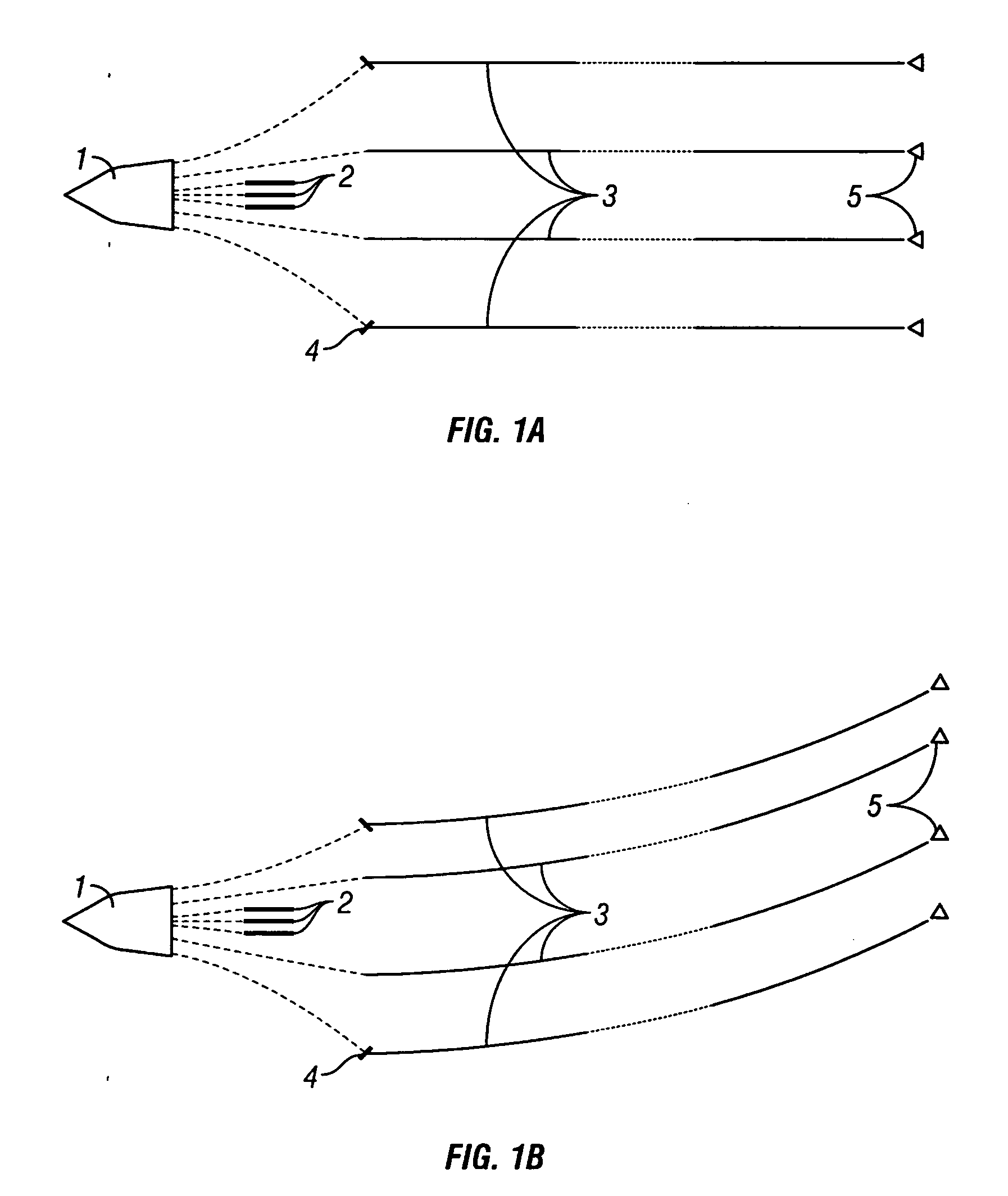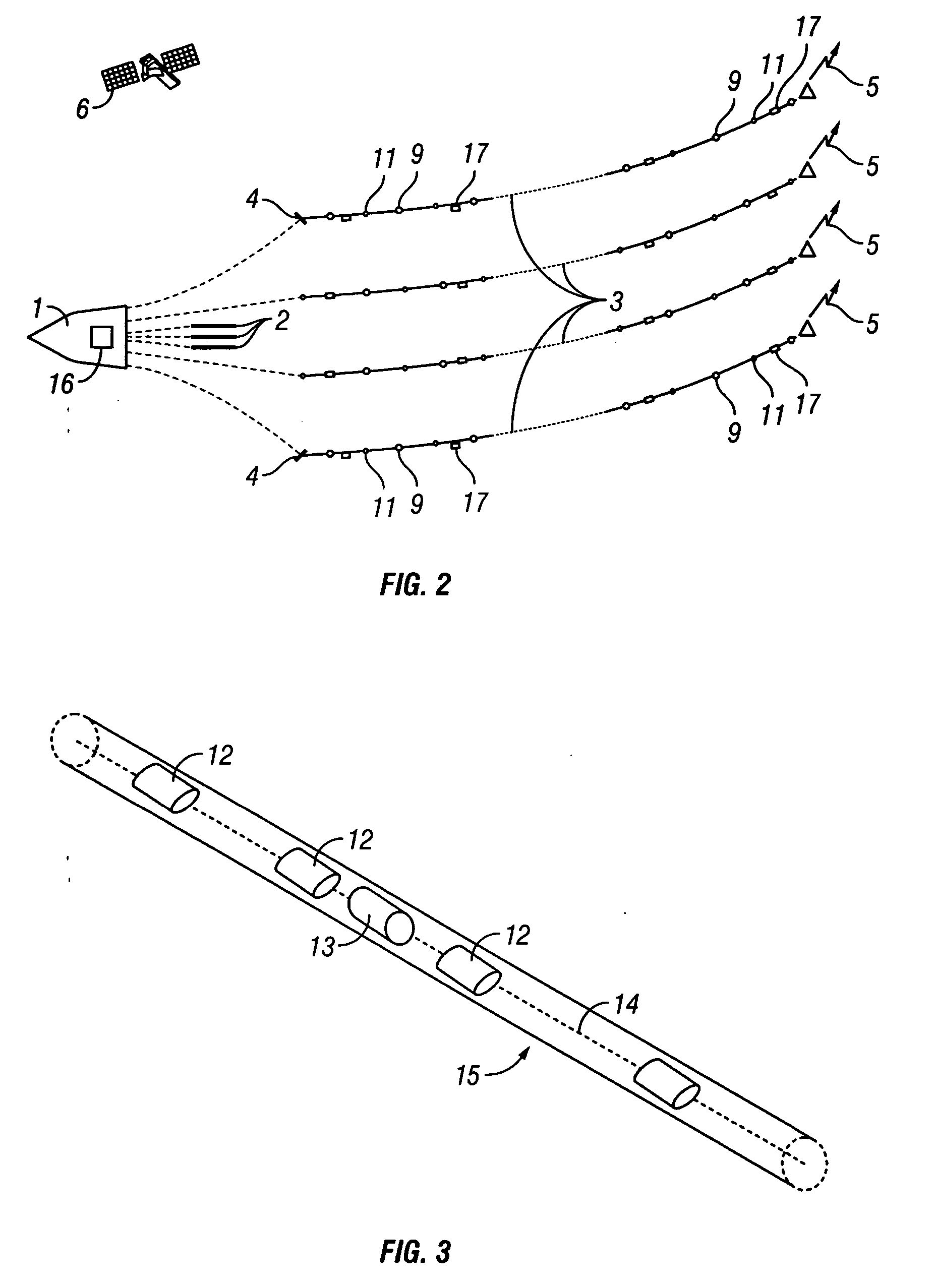System and method for determining positions of towed marine seismic streamers
a technology of marine seismic and position determination, applied in the field of geophysical prospecting, can solve the problems of complex solution of such tangling scenarios, exposing the seismic crew to hazardous hazards, and sometimes losing externally-mounted compasses, and achieve the effect of low cross-correlation
- Summary
- Abstract
- Description
- Claims
- Application Information
AI Technical Summary
Benefits of technology
Problems solved by technology
Method used
Image
Examples
Embodiment Construction
[0045] The invention is a system and method for determining the positions of data acquisition equipment, in particular the seismic sensors used in multiple streamer cables used in marine seismic surveys for imaging the subterranean formations. The system comprises a series of acoustic transmitters and receivers, dedicated to the task of determining streamer positions, distributed along the length of the streamers. The transmitters and receivers are incorporated along with corresponding power and control electronics into the streamer. In a preferred embodiment, the system for determining streamer positions of the invention is designed as a stand-alone system with separate power supply and communication telemetry links to the survey vessel.
[0046] Acoustic signals from the transmitters located within a section of a streamer cable are detected by a plurality of dedicated receivers located within other sections. The receivers can be located in sections both within the same streamer as t...
PUM
 Login to View More
Login to View More Abstract
Description
Claims
Application Information
 Login to View More
Login to View More - R&D
- Intellectual Property
- Life Sciences
- Materials
- Tech Scout
- Unparalleled Data Quality
- Higher Quality Content
- 60% Fewer Hallucinations
Browse by: Latest US Patents, China's latest patents, Technical Efficacy Thesaurus, Application Domain, Technology Topic, Popular Technical Reports.
© 2025 PatSnap. All rights reserved.Legal|Privacy policy|Modern Slavery Act Transparency Statement|Sitemap|About US| Contact US: help@patsnap.com



